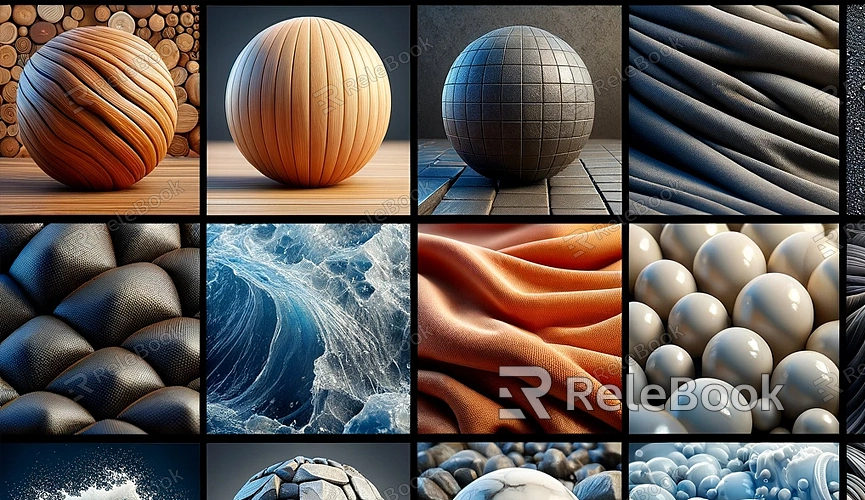What Are Blender Textures?
What are Blender textures? Blender textures refer to 3D textures that can be used within this versatile software. This encompasses various texture types, file formats, and more. Blender, as a multifaceted and powerful 3D creation tool, supports the use of different 3D textures, enhancing the visual appeal of models and achieving more realistic rendering effects. Below are some common types of 3D textures that can be utilized in Blender, and these texture resources are available on Relebook.

1. Color Texture:
Color textures can be applied to a wooden table model to simulate the natural tones of different types of wood. Enhancing the model with rich and realistic wood textures contributes to a more lifelike appearance.
2. Normal Maps:
Applying normal maps to a stone wall creates the illusion of subtle surface details, such as protrusions and cracks, when interacting with light. This technique adds depth and realism to the overall scene.
3. Displacement Maps:
When sculpting terrain models, displacement maps can be used to modify the geometry, simulating changes in surface elevation. This technique proves valuable in creating realistic terrains.
4. Metalness Maps:
Enhancing the surface of a robot model with metalness maps allows control over the intensity of its reflection, presenting materials like shiny metal or dull plastic.
5. Roughness Maps:
Applying roughness maps to a medieval castle model creates a weathered and aged appearance. This alters reflectivity, making certain areas appear more worn and less reflective.
6. Opacity Maps:
Designing a glass bottle with liquid inside requires opacity maps. This texture controls the transparency of the glass, achieving a realistic portrayal of the liquid inside the bottle.
7. Environment Maps:
When simulating space scenes, environment maps can be used to depict distant stars and galaxies. This not only affects the lighting of objects in the scene but also reflects their surroundings.
8. Emission Maps:
Creating a futuristic cityscape, utilizing emission maps can make specific parts of the model emit light, creating a vibrant and dynamic scene.
9. Displacement Maps (again):
Designing realistic fabric textures for a sofa involves using displacement maps to add subtle wrinkles and folds, mimicking the appearance of real fabric.

